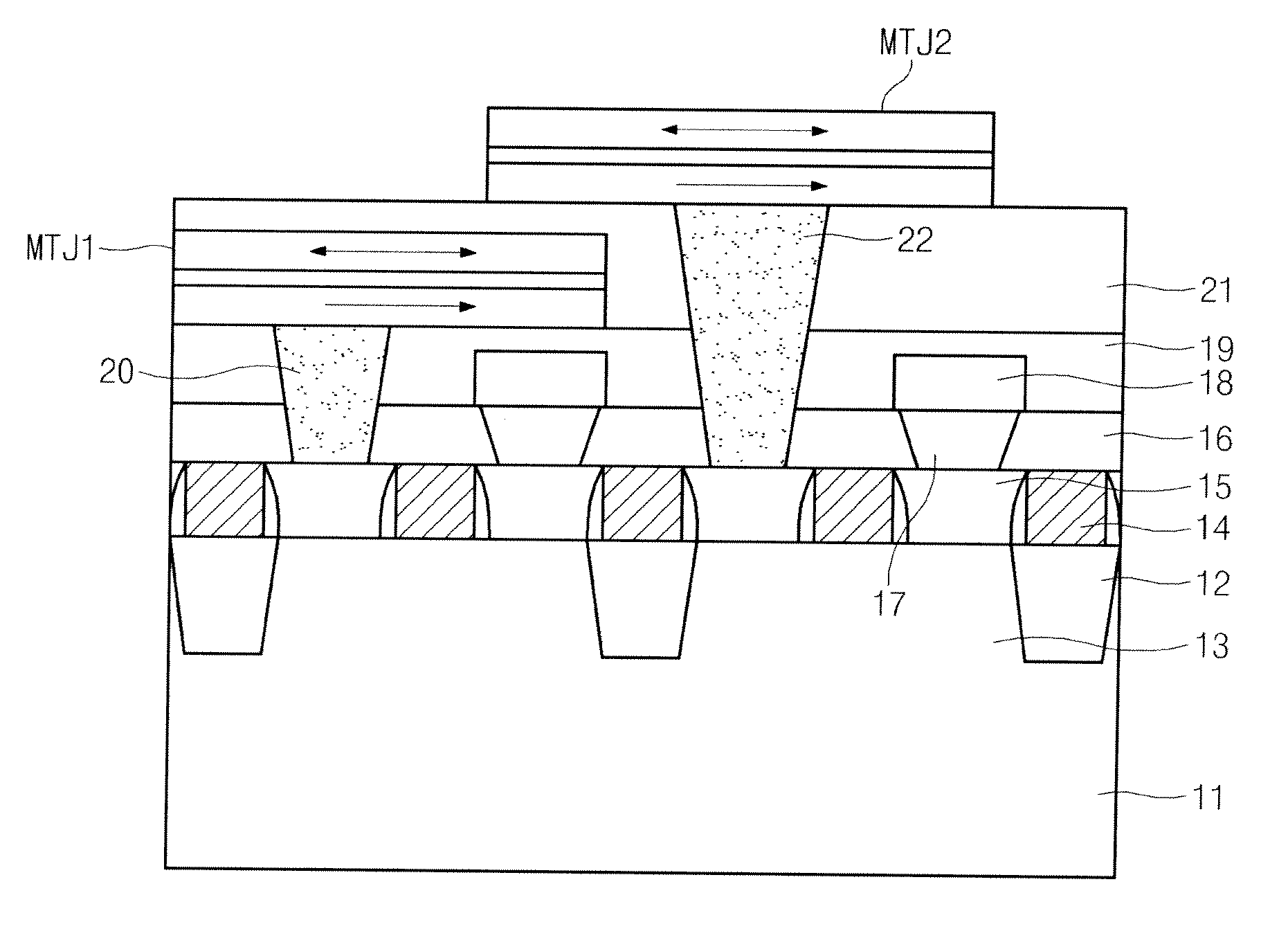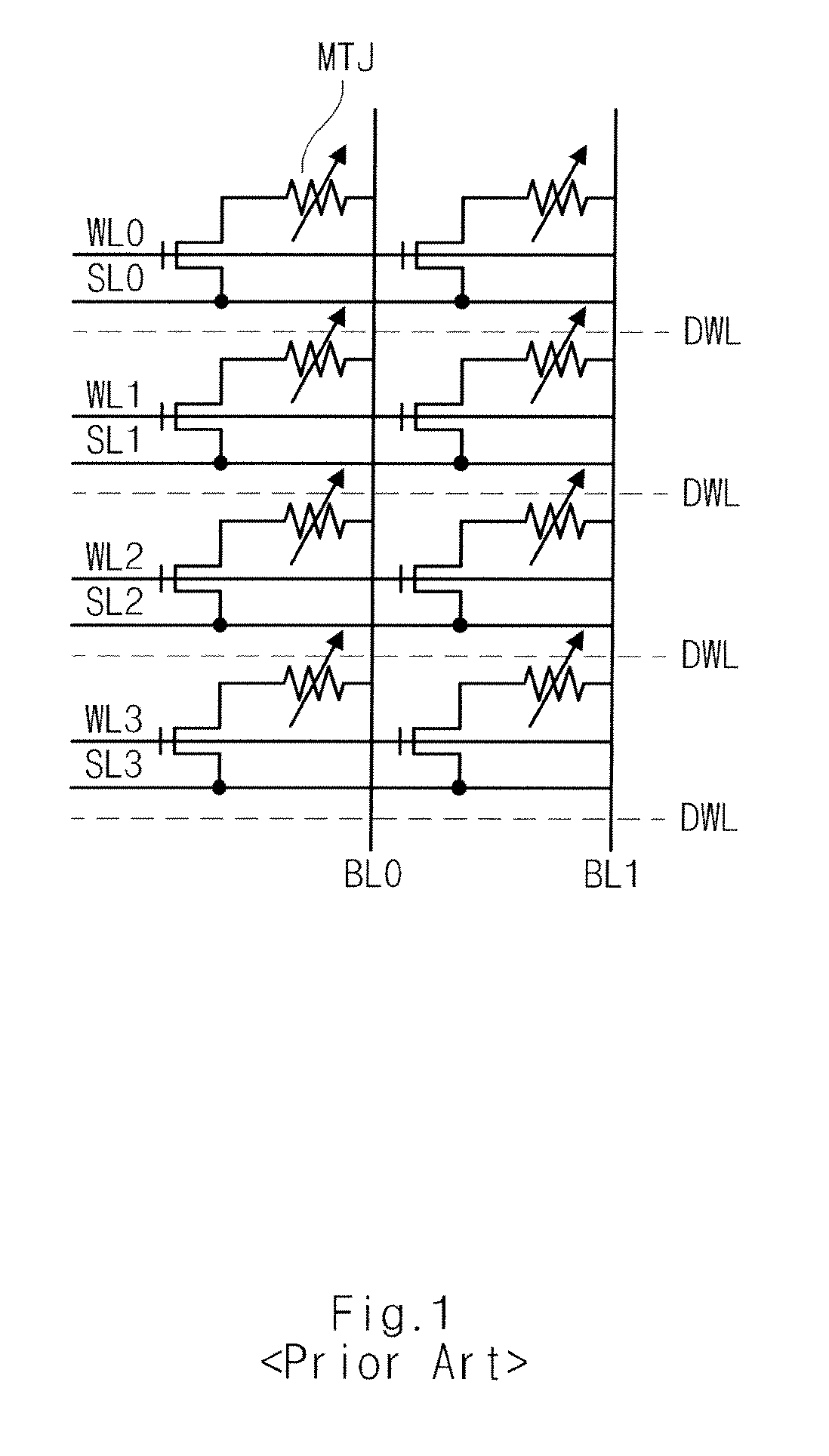Multi-Stacked Spin Transfer Torque Magnetic Random Access Memory and Method of Manufacturing the Same
a magnetic random access memory and multi-stacked technology, applied in the direction of digital storage, semiconductor devices, instruments, etc., can solve the problems of reducing affecting the performance of flash memory, and affecting the efficiency of flash memory, so as to improve the cell structure of stt-mram, minimize interference between adjacent mtjs, and secure the thermal stability of mtjs
- Summary
- Abstract
- Description
- Claims
- Application Information
AI Technical Summary
Benefits of technology
Problems solved by technology
Method used
Image
Examples
Embodiment Construction
[0044]FIG. 3 is a cross-sectional diagram illustrating a STT-MRAM according to an embodiment of the present invention. A gate electrode 14 is formed over a silicon substrate 11 having a device isolation film 12 and an active region 13. A landing plug contact 15 is formed between the gate electrodes 14. A source line contact 17 is formed over the landing plug contact 15 positioned at one side of a source / drain region formed in both sides of the gate electrodes 14. Bottom electrode contacts 20 and 22 are formed over the landing plug contact 15 positioned at the other side of the source / drain region. A source line 18 is formed over the source line contact 17. A MTJ1 and MTJ2 are formed over the bottom electrode contacts 20 and 22, respectively. The source line 18 is formed to be straight in parallel with the gate electrode 14. Each of the MTJ1 and MTJ2 includes two magnetic layers and a tunnel barrier located between the two magnetic layers. The bottom magnetic layer includes a pinned ...
PUM
 Login to View More
Login to View More Abstract
Description
Claims
Application Information
 Login to View More
Login to View More - R&D
- Intellectual Property
- Life Sciences
- Materials
- Tech Scout
- Unparalleled Data Quality
- Higher Quality Content
- 60% Fewer Hallucinations
Browse by: Latest US Patents, China's latest patents, Technical Efficacy Thesaurus, Application Domain, Technology Topic, Popular Technical Reports.
© 2025 PatSnap. All rights reserved.Legal|Privacy policy|Modern Slavery Act Transparency Statement|Sitemap|About US| Contact US: help@patsnap.com



